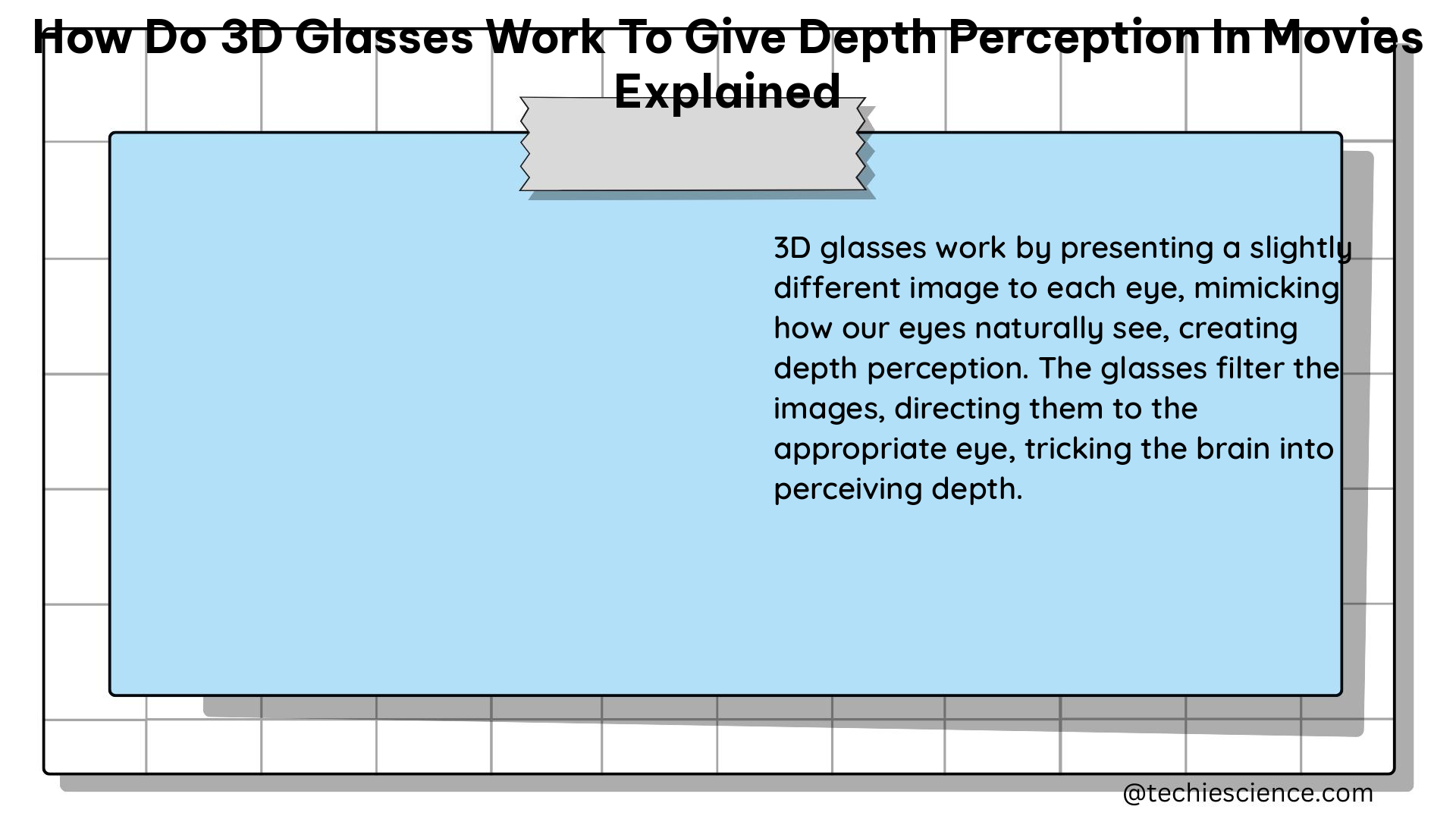3D glasses work by creating a slight difference between the images presented to each eye, mimicking the natural parallax that occurs when viewing objects in the real world with two eyes. This effect, known as stereoscopy, allows the brain to fuse the two images together, creating the illusion of depth and making objects appear to pop out of the screen or recede into the background.
The Technical Specifications of 3D Glasses
The technical specifications of 3D glasses involve the use of polarized light or shutter technology.
Polarized 3D Glasses
In the case of polarized glasses, each lens is designed to filter out light waves of a specific orientation, allowing only the corresponding image to reach the appropriate eye. For example, one lens may allow only vertically polarized light to pass through, while the other allows only horizontally polarized light. This ensures that each eye sees a slightly different image, creating the stereoscopic effect.
The physics behind this technology involves the principles of wave optics and human visual perception. Light waves have both amplitude and phase, and polarized filters take advantage of this by only allowing waves of a specific phase to pass through. The human brain is capable of interpreting the slight differences between the images seen by each eye as depth, due to the natural phenomenon of binocular vision.
Shutter 3D Glasses
Shutter technology, on the other hand, involves rapidly alternating the images shown to each eye, with the 3D glasses synchronizing to this alternation. The glasses contain LCD shutters that open and close in sync with the projector or screen, allowing each eye to see only the intended image at the correct time.
This technology also relies on the principles of wave optics and human visual perception, as the brain is able to fuse the rapidly alternating images and interpret them as having depth.
Quantifiable Data and Formulas

In terms of measurable, quantifiable data, the average distance between human eyes is approximately 5 centimeters, which is the basis for the stereoscopic effect created by 3D glasses. Additionally, the amount of polarization or the speed of the shutter technology can be precisely controlled to optimize the 3D viewing experience.
To further understand the physics and mathematics involved, consider the formula for calculating the disparity between the images seen by each eye:
Disparity (d) = (x2 – x1) / D
Where:
– x1 and x2 are the positions of the same point in the image as seen by the left and right eyes, respectively.
– D is the distance between the eyes (interpupillary distance).
This formula can be used to calculate the optimal disparity for a given 3D system, ensuring that the stereoscopic effect is neither too weak nor too strong.
Examples and Numerical Problems
Example 1: Calculating Disparity
Suppose the interpupillary distance (D) is 5 cm, and the positions of a point in the image as seen by the left and right eyes are x1 = 2 cm and x2 = 3 cm, respectively. Calculate the disparity (d).
Given:
– D = 5 cm
– x1 = 2 cm
– x2 = 3 cm
Substituting the values in the formula:
Disparity (d) = (x2 – x1) / D
Disparity (d) = (3 cm – 2 cm) / 5 cm
Disparity (d) = 1 cm / 5 cm
Disparity (d) = 0.2
Therefore, the disparity between the images seen by the left and right eyes is 0.2.
Numerical Problem:
A 3D movie theater has a screen width of 10 meters and an average interpupillary distance of 6 cm among the audience. If the maximum disparity allowed for a comfortable 3D viewing experience is 0.3, calculate the maximum depth (in meters) that can be achieved in the movie.
Given:
– Screen width = 10 m
– Interpupillary distance (D) = 6 cm = 0.06 m
– Maximum disparity (d) = 0.3
Using the formula:
Disparity (d) = (x2 – x1) / D
Maximum depth (x2 – x1) = d × D
Maximum depth = 0.3 × 0.06 m
Maximum depth = 0.018 m or 1.8 meters
Therefore, the maximum depth that can be achieved in the 3D movie is 1.8 meters.
Conclusion
In summary, 3D glasses work by creating a slight difference between the images presented to each eye, taking advantage of the brain’s ability to fuse these images together and interpret them as having depth. The technical specifications involve the use of polarized light or shutter technology, and the physics behind this effect is based on wave optics and human visual perception. Measurable, quantifiable data includes the average interpupillary distance of 5 centimeters and the formula for calculating disparity, which can be used to optimize the 3D viewing experience.
References:
– The Guardian. (2013, June 17). 3D movie improves man’s vision after lifetime of impairment | Hugo. Retrieved from https://www.theguardian.com/film/2013/jun/17/3d-movie-hugo-improves-mans-vision
– Optometrists.org. (2021, December 23). Can 3D Movies Reveal Eye Problems? – Optometrists.org. Retrieved from https://www.optometrists.org/vision-therapy/guide-to-vision-therapy/can-3d-movies-reveal-eye-problems/
– Seaview Eye Care. (n.d.). How Do 3D Movies Work? – Seaview Eye Care. Retrieved from https://www.seavieweyecare.com/blog/how-do-3d-movies-work.html
– Stephen Prepas M.D. (n.d.). Depth Perception & 3D Movies – Stephen Prepas M.D. Retrieved from https://stephenprepasmd.com/depth-perception-and-3d-movies/
– Reddit. (2023, May 9). Anyone with poor vision find alternatives or solutions to standard 3D glasses not working? Retrieved from https://www.reddit.com/r/AMCsAList/comments/13cnskl/anyone_with_poor_vision_find_alternatives_or/

The lambdageeks.com Core SME Team is a group of experienced subject matter experts from diverse scientific and technical fields including Physics, Chemistry, Technology,Electronics & Electrical Engineering, Automotive, Mechanical Engineering. Our team collaborates to create high-quality, well-researched articles on a wide range of science and technology topics for the lambdageeks.com website.
All Our Senior SME are having more than 7 Years of experience in the respective fields . They are either Working Industry Professionals or assocaited With different Universities. Refer Our Authors Page to get to know About our Core SMEs.